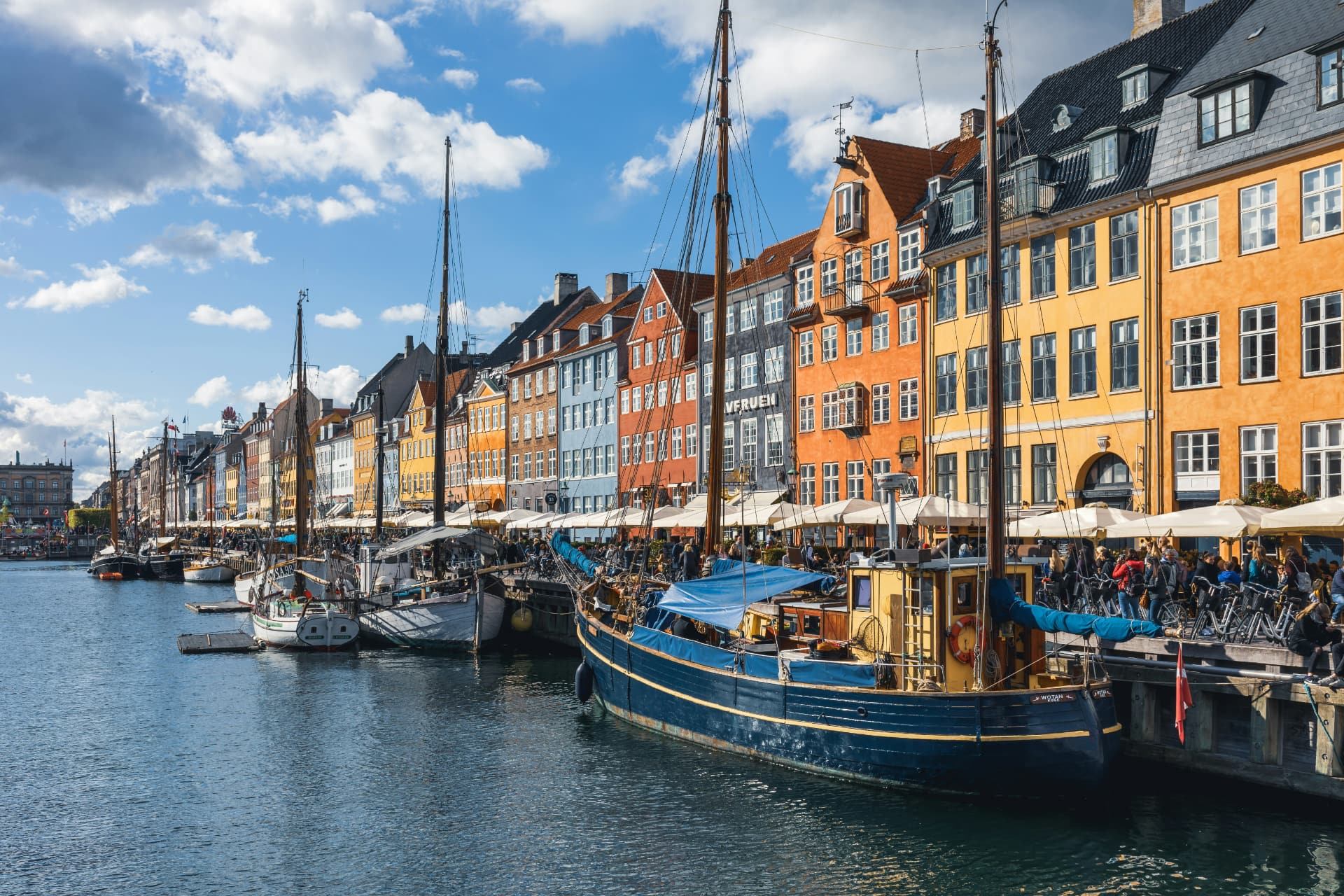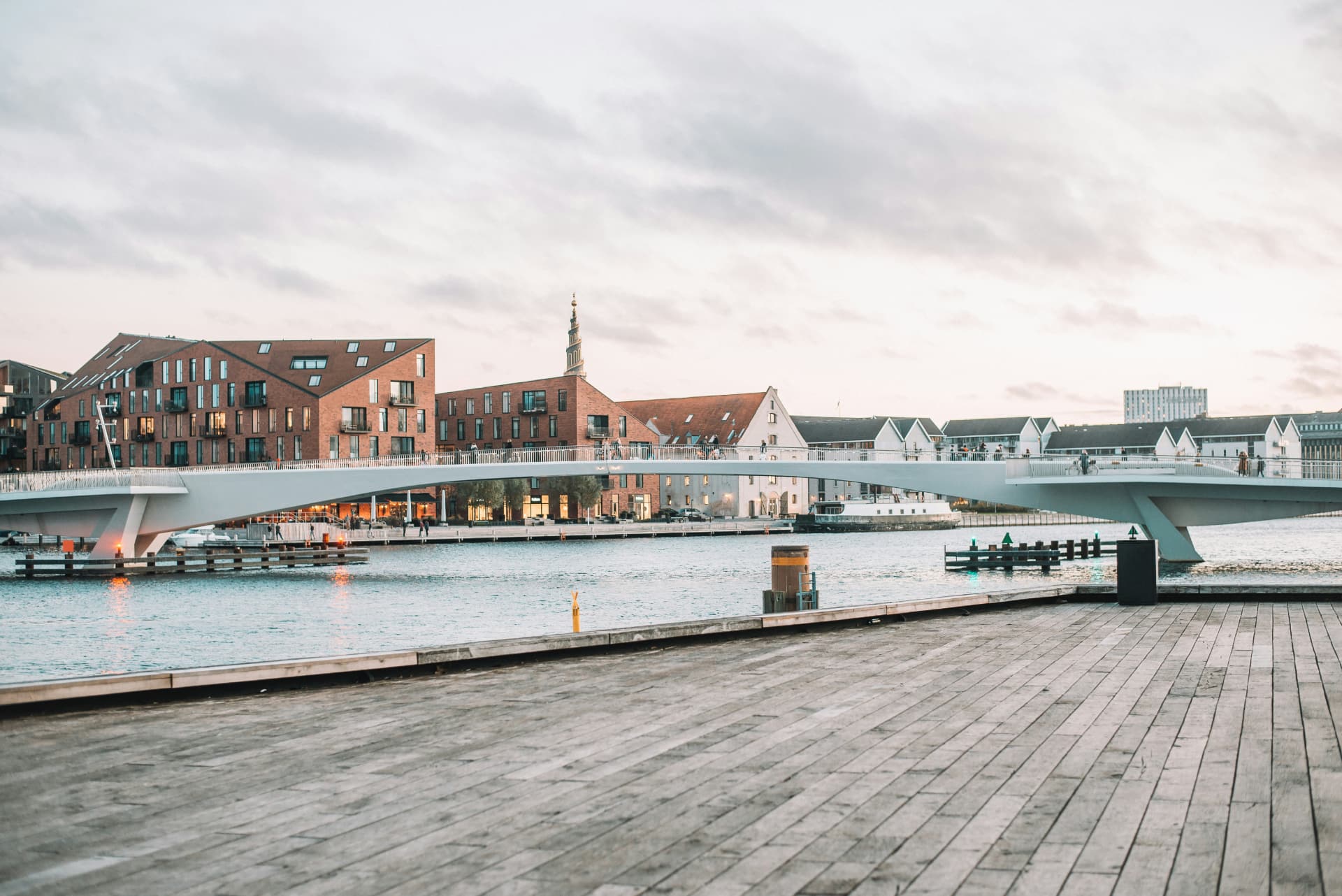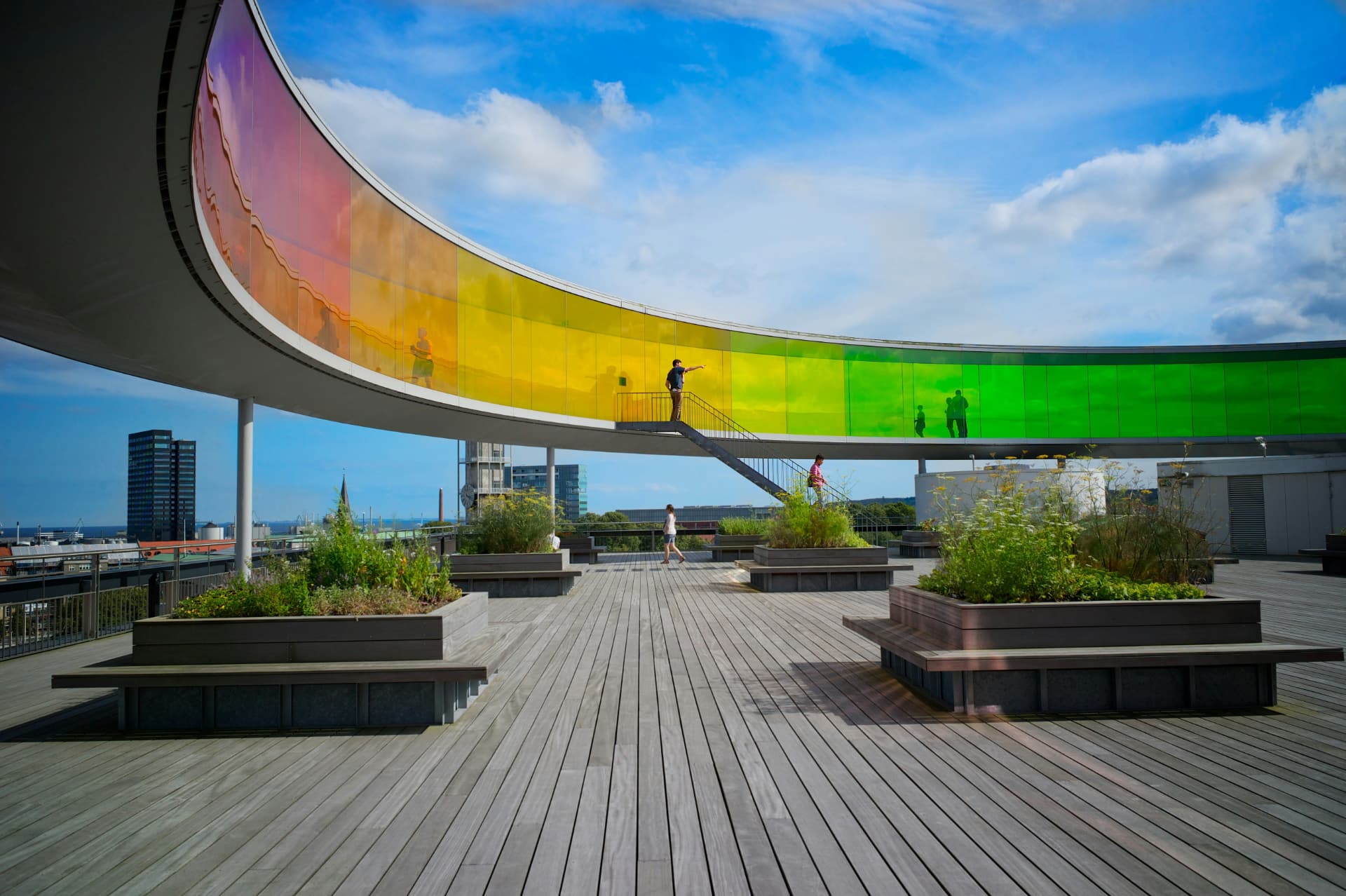Nestled in the heart of Copenhagen lies Nyhavn, the city’s historic waterfront, canal, and entertainment district. Originally a busy commercial port where ships from all over the world would dock, Nyhavn has transformed into one of the most iconic postcard spots in Copenhagen. With its brightly colored 17th and 18th-century townhouses, historic wooden ships, and lively atmosphere, Nyhavn epitomizes the charm and beauty of the Danish capital.
This picturesque district offers visitors a glimpse into historical Denmark, while also serving as a hub for social gatherings and cultural events. Whether you’re a history enthusiast eager to explore Copenhagen’s past or a traveler in search of the perfect Danish culinary experience, Nyhavn offers something for everyone. From the moment you step onto the cobblestone streets lined with rainbow-hued houses, Nyhavn captivates with its vibrant energy and scenic views.
Join us as we delve into the history, architecture, and modern allure of Nyhavn, uncovering why this canal district is not just a must-visit for tourists but a beloved locale for Copenhagen’s residents.

The Rich History of Nyhavn
From Maritime Gateway to Cultural Hotspot
Nyhavn was established in 1673 by King Christian V, with the intent of connecting the bustling inner city to the sea, creating a gateway for maritime trade and commerce. The canal was primarily dug by Swedish prisoners of war, who contributed to much of the city’s development during this era. Originally, Nyhavn served as a vital economic hub, where Danish ships from around the world would berth, and the area quickly became populated with a range of taverns and pubs, catering to the seamen and merchants.
Over the centuries, Nyhavn transformed from a gritty maritime port into a vibrant cultural quarter. As the importance of its role in shipping declined, the artistic and bohemian life began to take root. One of Nyhavn’s most famous residents was Hans Christian Andersen, who lived in several locations around the harbor, including at numbers 20, 67, and 18, where he wrote some of his famous fairy tales such as “The Tinderbox” and “The Princess and the Pea.”
By the mid-20th century, the area’s appeal waned, and it fell into disrepair, becoming known more for vice than vibrant nightlife. However, a revitalization effort in the 1980s transformed Nyhavn into the picturesque, family-friendly area seen today, lined with restaurants, cafes, and historical wooden ships. Some of these ships are museum pieces, meticulously preserved to maintain the historical maritime feel of the canal. The revitalization of Nyhavn was a part of a broader effort to celebrate Copenhagen’s historical heritage while promoting it as a cultural and tourist destination.
Today, Nyhavn stands as a testament to Copenhagen’s historical significance and its continuous evolution. The area reflects the Danish love for blending tradition with modernity, maintaining its old-world charm while serving as a lively and welcoming spot for locals and tourists alike.

Architectural Marvels and Notable Buildings in Nyhavn
A Colorful Tapestry of Historic Facades
Nyhavn’s architecture is a vibrant testament to Copenhagen’s rich maritime history and urban development. The canal is flanked by rows of brightly painted townhouses dating back to the 17th and 18th centuries, their facades rendered in a kaleidoscope of colors. These historic buildings, originally built to house the area’s bustling sea-commerce community, have been meticulously preserved and restored, offering a picturesque glimpse into the past.
Notable Structures Along the Canal
One of the most iconic buildings in Nyhavn is at No. 9, the oldest house in the area, which dates back to 1681. Remarkably, the structure has maintained its original façade, a rarity in an area known for extensive renovations and updates over the centuries. This building is a favorite subject for photographers and historians alike, symbolizing the enduring legacy of Nyhavn’s architectural heritage.
Another notable residence is No. 20, where Hans Christian Andersen wrote several of his famous fairy tales. This house, like many others in Nyhavn, features a plaque commemorating its significance, drawing literature enthusiasts eager to connect with the spirit of one of Denmark’s most beloved authors.
Preservation and Continuity
The preservation of Nyhavn’s architectural integrity is a key focus for Copenhagen’s heritage authorities. Efforts are made to ensure that any renovations or repairs are in keeping with the historical character of the buildings. This commitment to preserving the physical history of Nyhavn allows visitors to step back in time and experience the area as it might have looked hundreds of years ago.
A Living Museum
Today, these historical buildings have been repurposed to host a variety of modern businesses, from cozy cafés and upscale restaurants to boutique shops and galleries. This blend of old and new creates a dynamic atmosphere that is quintessentially Danish—respectful of history while enthusiastically embracing contemporary life.
Walking through Nyhavn offers an architectural journey that mirrors the cultural evolution of Copenhagen itself. Each building tells a story, not just through its physical appearance, but through the layers of personal and commercial histories that have unfolded within its walls.

Modern-Day Nyhavn: Dining, Shopping, and Entertainment
Culinary Delights Along the Waterfront
Today’s Nyhavn is as much a culinary destination as it is a historical site. The area is lined with restaurants and cafes that cater to a variety of tastes and preferences. Many of these establishments offer outdoor seating along the canal, providing diners with picturesque views while they enjoy their meals. Whether you’re in the mood for traditional Danish cuisine like smørrebrød (open-faced sandwiches) or international dishes, Nyhavn’s vibrant dining scene has something to offer.
Iconic Dining Spots
One must-visit restaurant is the Seafood Bar, known for its fresh and locally sourced seafood. Another popular choice is Cap Horn, a cozy restaurant that combines organic ingredients with traditional recipes, offering a rustic yet refined dining experience. For those with a sweet tooth, Vaffelbageren offers homemade ice cream and freshly baked waffles, perfect for enjoying on a leisurely stroll along the canal.
Shopping and Local Crafts
Nyhavn isn’t just about dining; it’s also a great place to shop. The streets around the canal are dotted with boutiques selling Danish fashion, handmade jewelry, and unique souvenirs that make perfect gifts or keepsakes. The Christmas market, held annually in Nyhavn, is particularly famous for its range of local crafts and festive goods.
A Hub for Entertainment
Nyhavn transforms into a lively entertainment hub, especially during the summer months. Street performers, musicians, and artists line the sidewalks, adding a dynamic cultural layer to the area’s bustling atmosphere. The canal also serves as a departure point for various harbor tours and canal cruises, which offer visitors a unique perspective of Copenhagen from the water.
Annual Events and Cultural Celebrations
Nyhavn hosts several annual events that draw crowds from across Denmark and beyond. The Copenhagen Jazz Festival, for instance, features live performances in various Nyhavn venues, filling the district with music and festivity. Similarly, the Nyhavn Christmas market is a highlight of the holiday season, with its quaint stalls, seasonal treats, and warm glögg (mulled wine).
Nightlife in Nyhavn
As the sun sets, Nyhavn’s nightlife comes alive. The area is home to several historic pubs and bars where locals and tourists alike gather to enjoy a drink and soak up the lively atmosphere. The longstanding Nyhavn 17 is a favorite among visitors looking to experience authentic Danish pub culture.
Cultural and Recreational Activities in Nyhavn
Nyhavn is not only a feast for the senses with its vibrant dining and shopping options but also serves as a cultural gateway to some of Copenhagen’s most significant attractions and activities. Its lively atmosphere is complemented by a wealth of recreational opportunities that make it a perennial favorite among visitors and locals.
Museums and Cultural Institutions
Just a stone’s throw from Nyhavn, you’ll find several key cultural institutions that enrich the area’s historical landscape. The Danish Architecture Center (DAC) offers insights into Danish design and urban development through exhibitions, tours, and talks. Close by, the Copenhagen Contemporary art center presents large-scale installations by international artists, fostering a dialogue between the art and the local community.
For those interested in maritime history, the nearby Royal Danish Naval Museum showcases centuries of naval lore and is a testament to Denmark’s historical relationship with the sea. Each of these cultural institutions offers a deeper understanding of Danish heritage and contemporary issues.
Boat Tours and Canal Cruises
One of Nyhavn’s most enchanting experiences is exploring Copenhagen from its waters. Numerous operators offer boat tours and canal cruises that depart from Nyhavn, providing spectacular views of the city’s historic sites, including The Little Mermaid statue, the Opera House, and the Royal Danish Playhouse. These tours vary in length and theme, catering to different interests, from historical insights to culinary cruises that combine sightseeing with gourmet experiences.
Recreational Activities
For those looking to actively explore the area, kayaking and paddleboarding are available during the warmer months. These activities offer a unique perspective of Copenhagen’s architecture and canals from the water level. Additionally, the walking paths along the canal are perfect for jogging or a leisurely stroll, allowing visitors to take in the sights at their own pace.
Annual Cultural Events
Nyhavn is a hub for numerous cultural and festive events throughout the year. During the summer, the Copenhagen Jazz Festival fills the district with music, utilizing the outdoor cafes and bars as impromptu concert stages. In December, the Nyhavn Christmas market lights up the harbor, creating a festive atmosphere with its twinkling lights, Christmas decorations, and seasonal stalls selling everything from Danish holiday delicacies to handcrafted gifts.
Photography and Art in Nyhavn
Nyhavn’s picturesque setting makes it a favorite subject for photographers and artists. The colorful facades of the old houses and the historical wooden ships make for stunning compositions, whether you’re a professional photographer or an enthusiast capturing memories on your smartphone. Art students and sketch artists are often seen along the docks, drawing the scenic views and vibrant life that Nyhavn encapsulates.

Nyhavn – The Heartbeat of Copenhagen
Nyhavn embodies the spirit of Copenhagen: a seamless blend of historical charm and contemporary vibrancy. With its colorful facades, historic vessels, and bustling waterfront, Nyhavn offers a picturesque snapshot of Danish culture that is both timeless and inviting. Whether you are drawn to its rich maritime history, its lively dining scene, or the tranquil beauty of a canal cruise, Nyhavn provides a perfect starting point for any adventure in Copenhagen.
Visitors to Nyhavn are treated not just to a range of activities but to an experience that captures the essence of Danish hospitality and creativity. It’s a place where every corner offers a story, every meal is a celebration of local flavors, and every moment spent is a cherished memory in the making. From leisurely afternoons spent at cafes overlooking the water to evening strolls under the lights of the Christmas market, Nyhavn offers year-round attractions that appeal to all ages and tastes.
As you plan your visit to Copenhagen, include Nyhavn on your itinerary not just as a sightseeing destination but as a living, breathing part of the city that offers a deep connection to Denmark’s cultural and historical heritage. Whether it’s your first visit or a return trip, Nyhavn’s timeless allure continues to captivate and charm visitors from around the world.
Embrace the opportunity to experience Nyhavn, where every visit is a beautiful blend of the past and the present, and every moment spent is a step deeper into the heart of Danish culture.





0 Comments